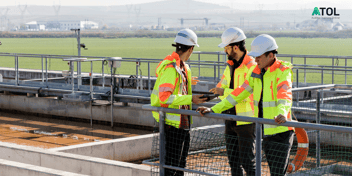
Dive into the essentials of ISO 14001's Clause 7.3 Awareness, as we simplify it for practical understanding and application in your organization. Discover how to keep your team informed and engaged with environmental policies and their impact on your work—let us make it straightforward and actionable.
Ok, let’s get started! Let’s take a look at what Clause 7.3 wants us to do. First off, the clause states that...
The organization shall ensure that persons doing work under the organization’s control are aware of:
a) the environmental policy;
b) the significant environmental aspects and related actual or potential environmental impacts associated with their work;
I will stop there and explain what these first two mean. This means that we need to ensure that anyone who is conducting work under our control (which could be employees, contractors, subcontractors, visitors, labor hire, or even volunteer workers) is made aware of the environmental policy as well as the relevant significant environmental aspects that the work they are doing may impact – to understand more about environmental aspects, be sure to check out clause 6.1.2.
Normally with new workers, these areas would be shared during the induction process or induction training. This captures new workers only of course, so when there are changes to the policy there should be a process in place to continue to share any updates with all workers. There might be a regular team meeting, toolbox talk, stand-up, or whatever is appropriate and relevant in your industry and business.
Then this clause goes on to state…
c) their contribution to the effectiveness of the environmental management system, including the benefits of enhanced environmental performance;
d) the implications of not conforming with the environmental management system requirements, including not fulfilling the organization’s compliance obligations.
It is also important that workers are aware of what their role is in contributing to the environmental management system and what would likely happen if they did not follow this. Again, this is great information to share at induction and ongoing team meetings.
I recently conducted a certification audit for a mining resource business who are certified to ISO 14001. It is a small business of 7 employees, and since I had been there last time, there had been a new employee. I love it when there’s a new person because then I can review their onboarding and induction processes. This business has an extensive environmental induction checklist which the Managing Director himself goes through with the new employee. This is supported by the Employee handbook. The checklist is marked off as each section is completed and signed by the employee and the Managing Director. There is also a sign-off sheet at the back of the Handbook which is signed and acknowledged by the employee and kept on file.
By the end of this process, all new employees are aware of the environmental management system (which includes the policy and objectives) as well as what their part is in the system. The business has weekly team meetings with the EMS as an agenda item. This is where any changes to the policy and objectives (and of course anything to do with the system) are raised, discussed, and minuted.
Something to remember with this clause is that nowhere does it state that documented information is required to be maintained or retained. So, we don’t need to document a procedure on HOW we are going to keep our workers aware of these requirements and there is no requirement to retain evidence that we have. However, if you are considering the risk of not retaining any evidence of these communications it is worthwhile keeping records of what has been communicated, to whom, when, and how. But remember this is just my opinion as an experienced auditor, consultant, and trainer in this area. This clause does not specifically state this.
Now that you have a better understanding of these requirements, it's time to take action and implement them in your own organization and ISO 14001 Environmental management systems.
If you're keen to expand your knowledge on ISO 14001, make sure to check out our other articles on the topic, starting with a comprehensive breakdown of What is ISO 14001:2015 Environmental management systems.
If you prefer watching over reading, head to our ATOLTV ISO 14001 playlist on YouTube, either way, be sure to check out our range of ISO 14001 Environmental Management Systems courses and qualifications today.





